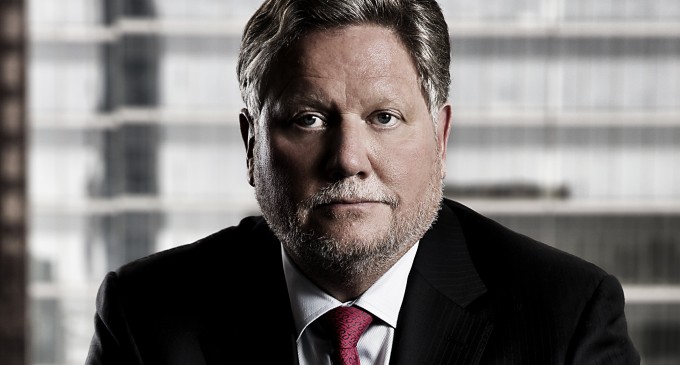Stephen Letwin, President and CEO, IAMGOLD is committed to his goal of 15% of the gold leader’s power generation coming from renewables in the next 3 to 5 years (see details in 2014 keynote). The company has already invested in a 5 MW solar plant for its Rosebel Mine in Suriname and is currently considering solar options for its Essakane Mine in Burkina Faso where energy accounts for 30% of the company’s costs at this operation.
In this spotlight interview, Letwin provides insight on gold pricing and energy strategy, lower oil and renewables economics and some of common misconceptions about how miners think about power.
Letwin will be participating in the opening keynote panel discussion at the 3rd annual Energy and Mines Toronto Summit on October 22-23. (view a video of Steve’s 2014 keynote)
Q: What would you describe as your top three energy concerns for your operations today?
A: First, as we mine deeper and deeper at our open pit mines we encounter harder rock, which requires more crushing and grinding than the previously excavated weathered, shallow rock. As a result, the cost of electric power used to operate the processing equipment increases. For example, the mill at our Essakane Mine in Burkina Faso underwent a major expansion to accommodate the harder rock resulting in a significant increase in energy consumption. Although production at Essakane increased by 33% in 2014 due to higher throughput, as well as higher grades, we need to take proactive measures to bring down our energy costs.
Second, in many of the jurisdictions in which we operate, there is not an abundant supply of reliable, well-priced electric power available. This has required on-site generators that run on fuel and are relatively high-cost to operate on a per kWh basis.
And third, while lower oil prices have allowed us to negotiate lower prices for fuel inputs, in some of the jurisdictions in which we operate, the government has control over the fuel prices, so even though fuel prices have declined substantially we don’t always see the full impact of lower prices.
Q: Has the drop in gold price changed your energy strategy when it comes to investigating new power options?
A: With the drop in the gold price, we have intensified our focus on cost reduction and the preservation of capital. As such, we have been actively reviewing all of our cost inputs, including the cost of electric power at our mine sites. Ideally, in the next 3-5 years, I’d like to see renewables account for 15% of our power generation.
At our Rosebel Mine in Suriname, we built a 5 MW solar power plant in 2014 that is capable of generating power at a very low operating cost for a period up to 20 years. By committing to build this plant, we effectively pre-paid for a source of lower cost electric power going forward.
Although the savings generated from investing in solar power may diminish in a declining oil price environment, we have to think long-term. So we are also considering a solar power plant for our Essakane Mine. Energy accounts for about 30% of our costs at this operation and oil prices could rise again in the future. With the cost of solar panels having fallen considerably, this is an option we will continue to explore.
At the same time, we are accelerating our strategy to optimize energy usage and production. We are doing this by increasing the efficiency of our power plants and looking at long-term cheaper energy solutions. We are also taking steps to reduce the energy loss across our operations and to optimize the energy efficiency of our equipment.
Q: What would you say is the biggest misconception other industries, including renewables, have about the way mining leaders think about power?
A: Other industries may not realize the amount of time and effort that mining leaders must spend on analysing the options to not only reduce power costs, but to benefit the communities in which we operate. Maintaining a social license to operate is tremendously important to us, and this is an important factor when evaluating the returns from an investment in green power.
Ideally, we want to install infrastructure that benefits the community not only while we are in production, but long after the mine closes. For example, we committed to the Government of Suriname that once mining operations cease at Rosebel, the 5 MW solar farm, which is the first renewable source of energy in the country, will be left for the people of Suriname to use. That’s the kind of legacy we like to leave behind.
Q: What are you looking forward to at the 3rd annual Energy and Mines Toronto Summit on Oct. 22-23?
A: I am looking forward to hearing about new technological advances being made in the field of energy storage, so that renewables can provide a continuous flow of energy in the future, rather than an intermittent supply depending on when the sun shines or wind blows. In particular, we’re seeing some exciting innovations in battery storage technology. As a gold miner, low gold prices make it critical for us to drive down all-in sustaining costs. I’m interested in technologies enabling energy reduction and conservation, such as energy efficient LED lighting, which has the potential to reduce lighting energy loads by up to 80%.

